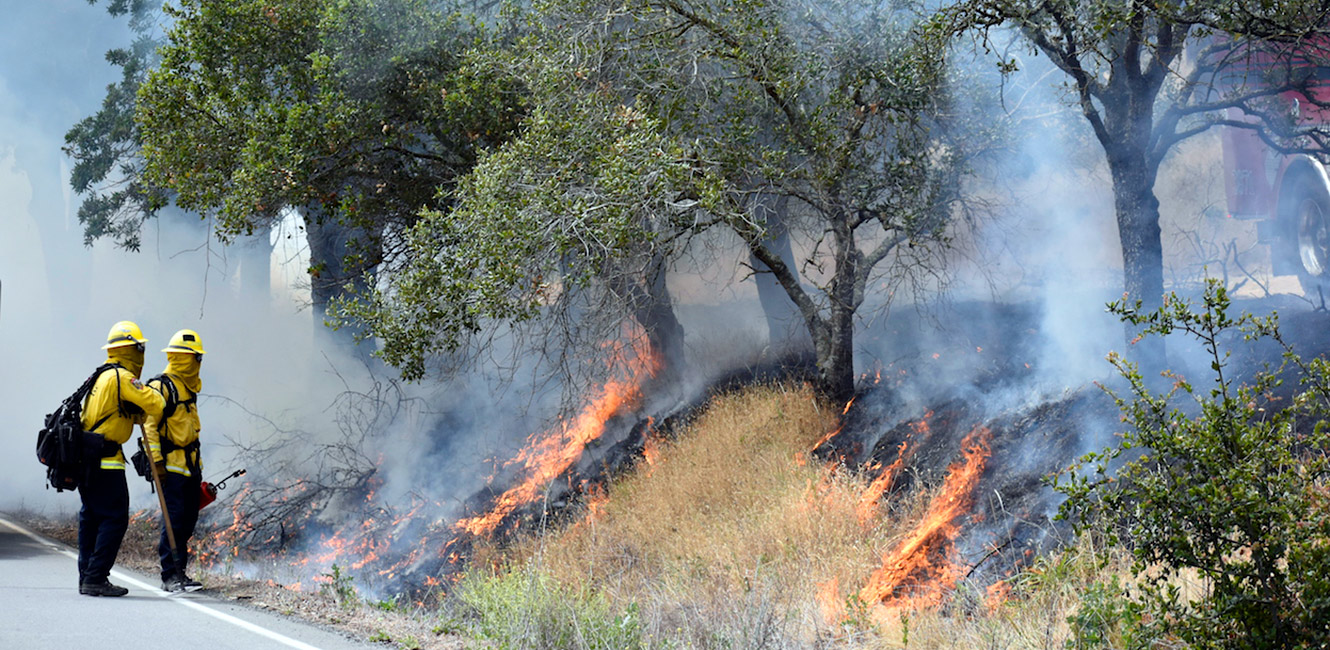Wildfire Resilience in Sonoma County Regional Parks

Wildfire prevention, preparation and response are part of Sonoma County Regional Parks’ ongoing stewardship across our 15,000-acre, 50-plus park system, as wildfire has become increasingly common throughout Sonoma County, California and the West.
Wildfire behavior is controlled by three factors: fuels, weather and topography. Therefore, the only practical way to modify fire behavior is by managing its fuel source. (Fuel refers to anything that could burn and spread fire, like trees, shrubs and dried grass.)
How we are working to help our communities
Prescribed fire
A prescribed fire or controlled burn is a fire that is intentionally set under specific conditions. Goals for prescribed fire range from restoring ecosystem health, reducing invasive species or build-up of vegetation, reducing wildfire risk, fire personnel training, or reintroducing an historic cultural practice.
Grazing
Grazing is a cost-effective way to reduce grasses and shrubs that could fan a future wildfire. Grazing mimics the natural disturbance of the landscape by large animals like bison and elk that used to roam Sonoma County, and when carefully managed, can help support habitat for native plants and animals.
Vegetation management
Ongoing, seasonal vegetation and fuels management projects include ecologically appropriate tree and brush thinning, targeted mowing and clearing of roads to improve emergency vehicle access.
Shaded fuel breaks
A shaded fuel break is often a strip of land where the density of vegetation is reduced to slow a potential wildfire. Unlike a fire break, where all vegetation is removed leaving only bare soil, a shaded fuel break retains larger trees to provide shade and wildlife habitat. In partnership with Cal Fire and local fire districts, we construct shade fuel breaks on park lands, as resources allow.
Climate durable design
After repeated wildfire, we’ve learned that our natural landscapes will restore themselves in time; seeds will sprout, wildlife will return. It’s the built park infrastructure – culverts, fences, signs – that need repair or replacement. We believe the best course of action is not to simply rebuild what was there before – leaving it vulnerable to damage during another wildfire – but to invest in “climate durable” infrastructure and strategies. For example, replacing wood with metal or plastic with concrete to make a park, and thereby neighboring communities, more resilient to future wildfires, and longterm climate change.
Sonoma Valley Wildlands Collaborative
We are a member of the Sonoma Valley Wildlands Collaborative, a group of six conservation organizations and land management agencies that is coordinating the management of 18,000 acres in Sonoma Valley to improve ecosystem health, increase resilience to wildfires and climate change, and reduce future impacts of wildfire to communities. This model partnership recognizes the benefits of working across boundaries and property lines to affect change.
What can park neighbors do to make their properties safer?
While we work in close consultation with Cal Fire and local fire districts, prioritizing projects where they will be the most beneficial to communities and fire fighters, park neighbors should continue to manage vegetation on their own properties and protect their homes against wildfire. Homeowners who border parks or other open spaces, or anyone who is concerned about wildfire can find additional resources about how to protect their homes and achieve wildfire readiness.


 Translate
Translate